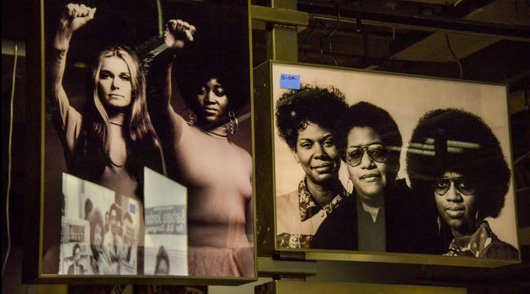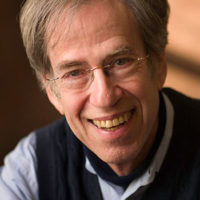
WASHINGTON — Residents of DC – I mean of the real DC of Ben’s Chili Bowl and Malcom X Park, not of the city of government buildings – get annoyed by inaugurals and monument openings because they snarl traffic and bring hordes of tourists who think you exist only to answer their dumb questions.
But the dedication Saturday of the Smithsonian Institution’s National Museum of African American History and Culture was different.
Tens of thousands of DC residents overtaxed our crumbling Metrorail system and poured into the National Mall for a full day of Freedom music, hip-hop and inspiring speeches by people like Smithsonian Board of Regents member Shirley Ann Jackson, who was educated in the segregated schools of DC, Lonnie Bunch, the grandson of a sharecropper who is now the museum’s director and by President Obama.
They came because the new 400,000 square foot museum, built on the last remaining open space on the National Mall, tells the story of the real DC, and of African American communities across the nation.
It contains photos, diaries, old clothes and other artifacts that had languished in the basements and attics of African American families for many generations; 30,000 items in all; 3,000 now on display.
Robin Givhan, an African American writer, was among the crowd at the opening. She wrote in the Washington Post “I am in the building, but mostly I’m in my head. Thinking of the past, considering the future. … The building is dignified. And that is a source of tremendous pride.”
Among the first visitors were four 70-year olds who in 1951 walked out of their high school in Kinston, North Carolina, to protest segregation. Now, 65 years later, one of the group, Eleanor Stewart, said “We feel so special and so proud, being recognized and represented here.”
The museum was first proposed by African American Civil War veterans, who were ignored. Although they were responsible for winning some of the major battles that saved the Union, they had been barred from the Grand Review of the Armies, a procession through DC streets that marked the end of the Civil War.
Generation after generation of black leaders never stopped pushing for the museum, and at the turn of the 21st century Rep. John Lewis, D.-Ga, a leader of the Civil Rights movement, picked up the torch.
In 2003, President George W. Bush authorized the funds and ten years later construction started.
Saturday, the Rev. Calvin Butts of New York City’s Abyssinian Baptist Church opened the dedication ceremonies by stressing that the history of African Americans is the history of America.
“We made America great,” Butts said. “We built the White House, we built the wall that protected the Dutch in New York City from the British. The blood, sweat and tears of generations is in this museum.
“Don’t be discouraged by what you see in the museum,” Butts concluded. “Everything in there points to one fact: we will be free one day.”
President Obama stressed that “This is the place to understand how protest and love of country don’t merely coexist but inform each other; how men can proudly win the gold for their country but still insist on raising a black-gloved fist; how we can wear ‘I Can’t Breathe’ T-shirts and still grieve for fallen police officers.”
He said, “It reminds us that routine discrimination and Jim Crow aren’t ancient history, it’s just a blink in the eye of history. It was just yesterday.”
This point was illustrated by DC Mayor Muriel Bowser in her welcoming remarks. She reminded the crowd that the District of Columbia, proudly called “Chocolate City” by its residents because it has historically been majority black, still has no voting representative in Congress.
“Some 672,000 Americans live in the shadows of the Capitol,” she said. “However, we won’t fully manifest our destiny until we are the 51st state and have a voice and a vote in both of the houses of our Congress.”
Bowser’s looking to the future is in keeping with the main purpose of the new museum.
Obama said, “… this museum provides context for the debates of our times. … Perhaps it can help a white visitor understand the pain and anger of demonstrators in places like Tulsa and Charlotte.
” … hopefully this museum can help us talk to each other. And more importantly, listen to each other. And most importantly, see each other. Black and white and Latino and Native American and Asian American — see how our stories are bound together. And bound together with women in America, and workers in America, and entrepreneurs in America, and LGBT Americans.”
The President concluded by saying “The great historian John Hope Franklin, who helped to get this museum started, once said, ‘Good history is a good foundation for a better present and future.'”
The ringing of a bell signaled the official opening of the museum.
It was the same bill that rang in 1863 in the First Baptist Church in Williamsburg, Virginia, when Abraham Lincoln signed the Emancipation Proclamation declaring all slaves in slave-holding states free.
Saturday, the bell rope was pulled by the Bonner family: four generations in all, from seven-year-old Christine to 99-year-old Ruth, whose father had been enslaved in Mississippi and had escaped to freedom.
The symbolism was clear: history is made by “ordinary” people.
That history is now on display at the Museum of African American History and Culture.
Photo: Display in Museum of African American History and Culture (photo/nmaahc)









Comments